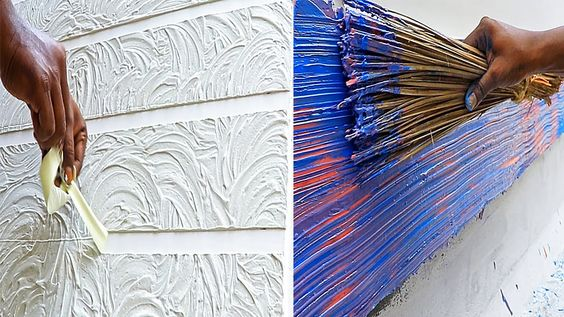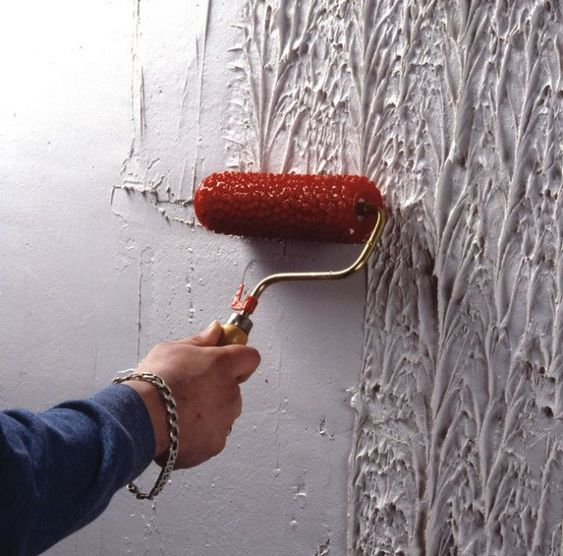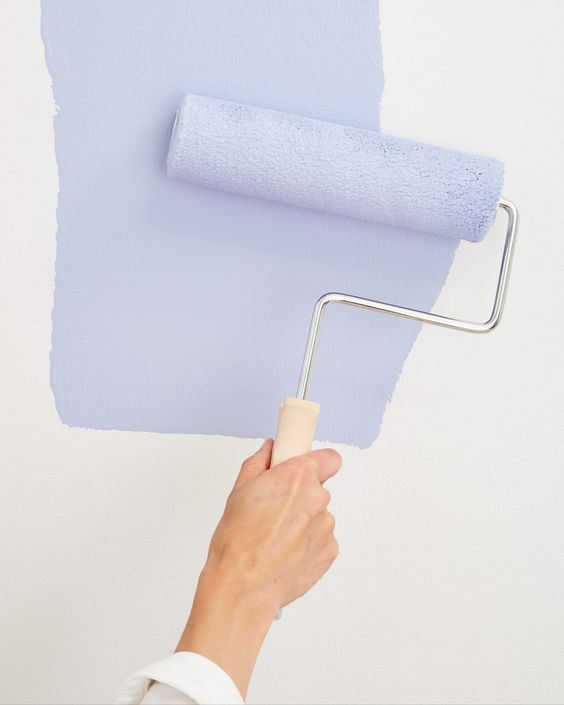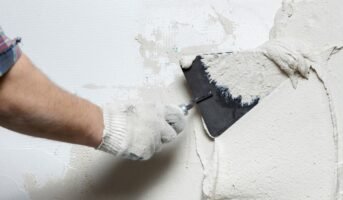Wall putty or putty paint is a well-known term, especially for people associated with paint. It is a white cement-based powder. Putty is made of polymer and other minerals. The wall appearance becomes quite smooth as the polymer is present in the putty. Putty is used for filling up all holes or cracks in a wall to smooth the surface.
Without smoothness on the wall, getting a good paint output is impossible. Apart from this, putty paint is also suitable for keeping stains or moulds at bay. Wall putty or putty paint is so convenient that it can be used on any wall. Whether the wall is rendered concrete or a precast wall, the wall surface will have the finest smoothness. This article includes essential details regarding putty paint.

Source: Pinterest
See also: Plaster of Paris: Usage, types, advantages and disadvantages
Variants of wall putty or putty paint
Putty paint has a few variants, which are as follows:
● Cement wall putty
Cement-based or wall cement putty is mainly used to repair concrete and masonry surfaces. They are available in powder form and must be combined with water before use. The texture of the cement putty should not be too runny or thick. It is then applied with a spatula and allowed to dry for about a day before applying paint to the walls.
● Acrylic Wall Putty
Acrylic-based or acrylic putty can be used on gypsum and drywall surfaces. In general, this putty is available in ready-to-use and powder form. They can be colourable, which will have a smooth finish. So in case you need to get the same coloured putty for your wall, you can get the same. The only downside is that it is not as durable as cement putty. Over time, you may come across chips or crack.
What is the process of applying putty paint or wall putty?
Before applying putty paint, go through the detailed process to never face a problem.
- As a first step, check whether your wall is plaster or drywall. Based on the wall type, you can choose the putty paint.
- Now, clean the wall. Use sandpaper to clean all dust and debris from the surface.
- Mix the putty powder properly. You can see mixing directions in the instructions.
- Always apply the putty mix with a flat-blade knife and maintain a single direction for a smooth finish.
- Wait for at least 24 hours for drying. After completing drying, you can further go for the wall paint.

Source: Pinterest
Advantages of putty paint
- Wall putty paint covers all cracks and holes on a wall. With the putty, the integrity of the structure can be restored.
- Putty works as a base for wall paint. It provides a very smooth finish to the wall.
- Putty can be used as an insulating option to fill all gaps between the wall, door, or window frame.
- Putty design is quite trendy. In interior decoration, putty is used to create various wall textures.
- Putty paint is resistant to water or moisture.
- When the putty is applied to the wall, the wall becomes sturdy and is not easily damaged.

Source: Pinterest
Safety measures or precautions you should follow while applying putty paint
When applying wall putty or putty paint, you must follow a few things:
- The whole wall surface should be cleaned or sanded properly. In this way, the putty can stay on the wall properly.
- Any holes or cracks may have a lot of dust or debris. Before applying putty, the holes should be cleaned with narrow materials like a screwdriver or wire.
- Starting from the corner area will be the best way to eliminate any bubbles between the walls. Also, putty wrinkles can be avoided smoothly.
- You must use a good-quality spatula to apply putty paint. Spread the coat of putty evenly and make sure that there are no lumps in the putty paint.
- A second coat of putty is also required so that any fine wrinkles can be avoided.
- Make sure that the putty is being applied with the help of a blade knife. A blade knife will help to glide over the wall without creating any mess.
- You must wait for 24 hours to make the putty coat dry. If the putty is not dried correctly, you cannot go for paint on the wall. It will start to chip off over time.
FAQs
Which are the best brands for putty paint?
To buy putty paint, you can choose from Berger, Nerolac, Birla, Pidilite, Asian paints, etc.
Can I get zero water leakage after using putty?
Yes, putty can give the assurance of zero water leakage.
How long does the wall putty last when kept in a packet after use?
The wall putty can stay in the proper situation for up to six months.
How many layers of putty are required for the wall?
A total of two layers of putty are required for a smooth wall finish.
| Got any questions or point of view on our article? We would love to hear from you.
Write to our Editor-in-Chief Jhumur Ghosh at [email protected] |
Housing News Desk is the news desk of leading online real estate portal, Housing.com. Housing News Desk focuses on a variety of topics such as real estate laws, taxes, current news, property trends, home loans, rentals, décor, green homes, home improvement, etc. The main objective of the news desk, is to cover the real estate sector from the perspective of providing information that is useful to the end-user.
Facebook: https://www.facebook.com/housing.com/
Twitter: https://twitter.com/Housing
Email: [email protected]











